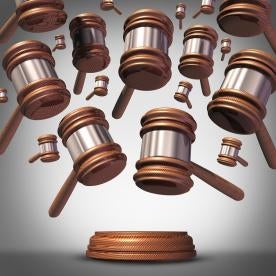In almost every situation, a party would prefer to defend a favorable judgment on appeal rather than fight to reverse a negative judgment. And when we are forced to be the appellant, we want the error in the challenged judgment to be as obvious as possible because the more obvious the error, the more likely the appellate court is to reverse. As if an adverse judgment is not troublesome enough, however, an often overlooked preservation requirement comes into play when faced with an adverse decision that contains an obvious error.
When confronted with such a judgment, two important considerations must be addressed. First, do you want to move for rehearing? And, second, do you have to move for rehearing? As to whether you “want to” move for rehearing, if there truly is a reasonable chance a motion for rehearing will prompt the trial court into reconsidering its ruling, a motion for rehearing may be advisable.
But if the trial court is unlikely to provide your client relief regardless of the error, moving for rehearing may do more harm than good. In that circumstance, a motion for rehearing can be analogized to a motion to strike an appellate brief (better known as a “motion to force your opponent to file a better brief”). Apart from wasting time and resources, a motion for rehearing with little chance of success could actually prompt the trial court to correct its obvious error and craft a judgment that is less likely to be reversed on appeal. In that scenario, a motion for rehearing is little more than a “motion for the court to issue a stronger adverse judgment.”
If you find yourself in such a situation, you may want to simply leave the judgment be and mount a strong argument on appeal based on the obvious error in that adverse judgment. But this may not always be advisable. In certain situations, a litigant may have to move for rehearing in order to preserve even an obvious error for appeal.
In some jurisdictions, “where an error by the court appears for the first time on the face of a final order, a party must alert the court of the error via a motion for rehearing or some other appropriate motion in order to preserve it for appeal.” Williams v. Williams, 152 So. 3d 702, 704 (Fla. 1st DCA 2014). In Williams, a civil contempt order failed to include a statutorily required finding of present ability to pay, yet the court determined the error was unpreserved because no motion for rehearing was filed. Based on this example, where a final order does not include certain evidentiary findings required by law, this must be brought to the attention of the trial court by way of a motion or the error may be waived on appeal.
The rule in Williams is by no means universal, as there is disagreement over the contours of this issue even within the intermediate appellate courts of that state. See Perez v. Borga, 44 Fla. L. Weekly D2595 (Fla. 4th DCA Oct. 23, 2019) (certifying conflict with Williams). Nonetheless, this preservation prerequisite — necessitating a motion for rehearing directed at any error appearing for the first time in a final order — appears to stem from the nearly universally accepted premise that in order for an error to be preserved for appeal, it must first be raised before the trial court.
Tip:
Decisions like Williams teach us that thought must be given to whether a motion for rehearing is necessary to preserve an error appearing for the first time on the face of a judgment, even if such a motion is unlikely to change the outcome at the trial level.




 i
i

